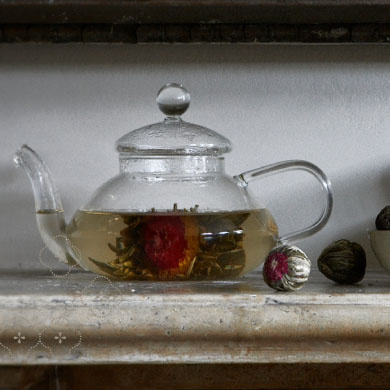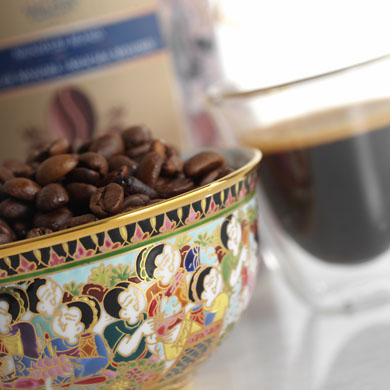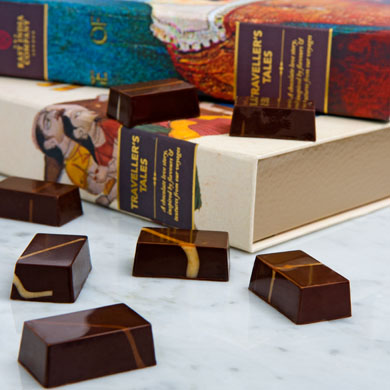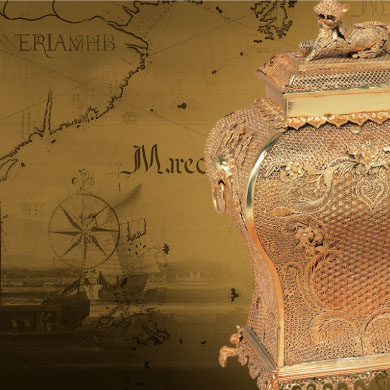- Story of tea
- Story of coffee
- Story of chocolate
- Story of biscuits
- Story of porcelain
 The Story of Tea
The Story of Tea
“Tea is water bewitched”
New traditions were established when The East India Company introduced exotic delights to England - arguably the most famous of these being tea.
Brought by The Company as a gift for King Charles II, these leaves were passed on to his wife, Queen Catherine of Braganza, who had grown up with tea in her native Portugal. She then slowly introduced this curious drink into aristocratic and noble societies, beginning a tradition that would last for centuries.
Initially tea leaves arrived in small quantities and were so expensive, that only the upper class could afford them. In fact, tea was once considered so valuable that it was kept locked in caddies.
In its early days, tea was consumed at garden parties, giving it an exotic cachet. Lavish parties were accompanied by fireworks and featured fancy flowers and even gambling.
Later The East India Company introduced the fashion of adding sugar to tea, leading to more frequent consumption of tea and an increase in the import of sugar.
Driven by the increasing demand for tea, what was once an indulgence became a widely enjoyed pastime, and by the late 18th century, tea accounted for more than 60% of The Company’s total trade.
 The Story of Coffee
The Story of Coffee
Aware of the importance of coffee as a trading commodity in the East, the East India Company sent ships as early as 1607 to visit Aden, the seaport city of Yemen, and adjacent ports to explore its many possibilities. Rather than bringing it back to Europe, where as yet there was little demand for coffee, the Company began selling it in Persia and Moghul India.
Though known throughout Europe and recognised for its medical qualities since the early 1700s, coffee did not begin to challenge the supremacy of a certain favourite beverage, beer, until the coffee house boom at the end of the 17th century and the adoption of coffee drinking. This flux in popularity saw East India Company become the largest and most successful importer of coffee for the British market.
Coffee lead to great wealth for Lloyd’s as well. Initially a modest coffee house neighbouring The Company’s headquarters on Leadenhall Street, it slowly became a destination for The East India Company’s Directors to discuss news of ships, and where businessmen came to underwrite voyages, laying the foundation for this insurance giant.
 The Story of Chocolate
The Story of Chocolate
Dating back to the ancient civilisations of the Aztecs and Mayans, chocolate slowly rose in popularity until it was eventually sold in all the principal cities of Europe around 1650.
Initially consumed as a beverage, chocolate houses were considered sinful places. Haunts of gambling, gossip and intrigue.
By the time of the reign of George III of England, The East India Company had to pay two shillings in tax, per pound of cocoa imported.
The Story of Biscuits
Biscuits were a staple diet on early Company voyages, specially designed to last the long, nautical journeys. Tough, dry and commonly referred to as ‘ship’s biscuits’, these were a far cry from the buttery treats available today.
 The Story of Porcelain
The Story of Porcelain
The craze for porcelain was not orchestrated, but was a by-product of another more lucrative trade, namely tea.
Once used to add ballast to ships without tainting the flavour of the precious tea cargoes, porcelain quickly became an essential item, with over half a million pieces brought to London in 1713 alone.
 UK
UK
 Visit our US Store
Visit our US Store
